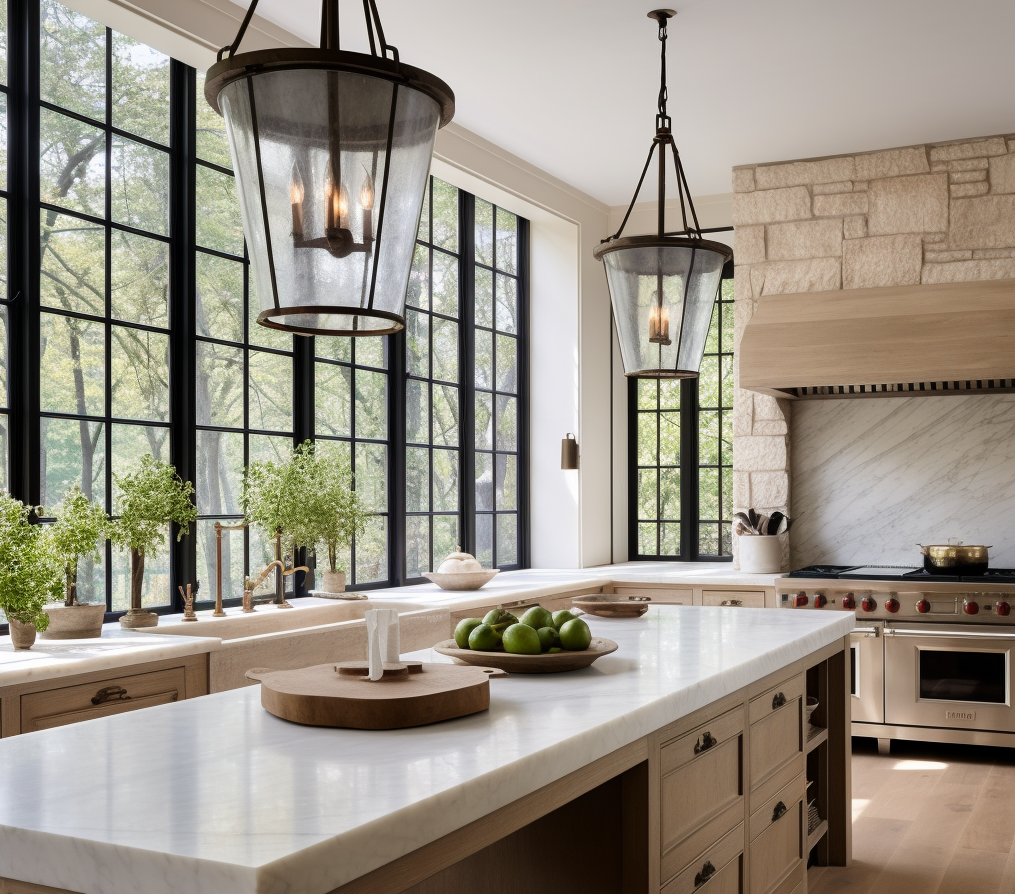We asked one of our favorite interior design resources, Lauren MacDonald, principal designer from Elle Macque, to answer one of your most frequently asked kitchen design questions: Do my counter stools need to match the rest of the wood in my kitchen?
Whether you're remodeling your kitchen in 2025, refreshing your kitchen island, or planning new construction, this designer rule for mixing wood tones will help guide your decisions.
Check out her full portfolio at https://www.ellemacque.com/ and follow her on Instagram at ellemacque.interiors for more design inspiration.
Do Counter Stools Need to Match Kitchen Wood Tones?
Simply: 100% No!
More in depth? Let's get to it.
So, we've all been there. You finally find those gorgeous counter stools that are exactly what you've been looking for. Great material, great look, great budget… then you notice it: the wood tone isn't an exact match to your cabinets or main wood tone that you have within the space. You pause. Do you remove them from your cart? Walk away, because they're "close, but not quite"?
Let me stop you right there and let you in on a little designer secret: Your wood tones do not have to match. Having one singular wood tone throughout your kitchen can make the room feel very flat, overly staged and one-note.
Why Mixing Wood Tones Is a Good Thing
Designing a kitchen (or any space, really) is about more than just checking boxes for matching finishes. It's about creating an environment that feels layered, lived-in, and warm. The way to do that? Mix your wood tones. Thoughtfully, of course.
Let's think about the kitchen for a moment. For most of us, it's the heart of our home. It's where we gather, where memories are made, and where life tends to happen. You want this space to feel rich and inviting, not sterile and matchy-matchy.
Properly mixing wood tones will instantly create a lived in feel. As with all things, there are more ideal ways to make the room feel cohesive. Here are some tips:
Start with a Dominant Base Tone
Before you start layering, you need to identify your anchor. This is the wood tone that will guide your palette. In kitchens, this is usually one of the following:
- Your cabinetry
- Your hardwood flooring
- A statement island or built-in
Let's say you have medium-tone oak cabinets. That's your base. From there, you'll want to choose other wood tones that complement that oak, not mimic it exactly, but work alongside it.
Stick to One Undertone Family
This is the biggest mistake people make when mixing woods: ignoring undertones. Wood tones fall into three general categories:
- Warm (think some maple, oak, cherry, walnut)
- Cool (think ash, gray wash, white or charcoal washes over lighter woods)
- Neutral (some white oak, certain finishes that sit between warm and cool)
You want to keep your woods in the same undertone family. That doesn't mean they have to be the same shade, but they should share a similar warmth or coolness.
For example, pairing a warm oak floor with a walnut stool that has a reddish-brown hue will feel intentional. But pairing that same oak floor with a cool, gray-toned ash table may look disjointed.
Pro tip: When shopping online, look at product descriptions and reviews — they often note whether a finish is warm, cool, or neutral. Better yet, order a sample if you can.
Balance with Texture, Scale and Repetition
When you're introducing multiple wood tones, balance is everything. A common designer rule is to repeat each wood tone at least twice within a space. This creates a sense of rhythm and purpose.
Let's say you introduce a darker walnut stool into a space with oak cabinets and light wood floors. To make it feel cohesive, you could repeat that darker tone in:
- Open shelving
- Picture frames or wall decor
- A tray or wooden bowl on the counter
- A pendant light with wood detail
In addition to repeating tones, consider varying textures and scales. That variety is what makes the room feel rich, not busy.
Use Neutrals & Textiles as Connectors
Here's where the magic happens. Your rugs, upholstery, metals, and even wall color help everything feel like it belongs together.
- Rugs/Runners with hints of both warm and dark hues can tie the whole room together.
- Upholstered counter stools (fabric or leather) can serve as a buffer between clashing wood tones.
- Metal finishes like brass, matte black, or brushed nickel can help distract the eye and break up too many wood surfaces.
- Wall color or tile can help balance out tone differences.
Think of these elements as the supporting cast. They're not the stars, but they make the whole production feel seamless.
Mixing wood tones is less about following hard rules and more about trusting your eye and layering with intention. So don't be afraid to hit "buy" on those gorgeous stools, even if they don't match your cabinets to a T. With a little thought and balance, they can become the exact piece your kitchen needs to feel complete.
Remember: The goal isn't to match. It's to harmonize.
-Lauren MacDonald principal designer from Elle Macque

